Chocolate, ink, sugar and dust are among the raw materials used for the striking photo-assemblages that have gained Brazilian-born Vik Muniz an international reputation.
Pictures of Anything, newly opened at the Tel Aviv Museum, gives a fine overview of all his best known photo-series, drawn from a career spanning quarter of century. In addition – and not to be missed – is the awarding winning film Waste Land (2008) directed by Lucy Walker, that documents the story of an art-cum-social project that Muniz carried out at Jardim Gramacho, Rio Janeiro, one of the world’s largest garbage dumps (now closed.)
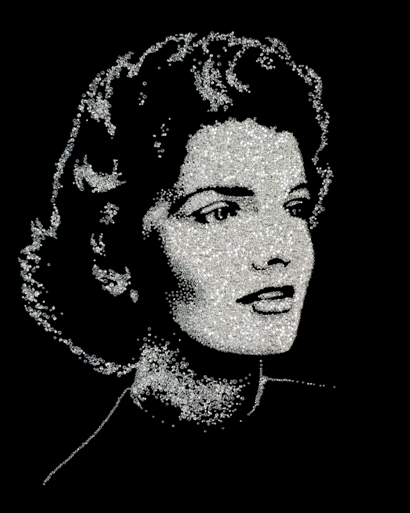
Photos of famous paintings, historical or cultural icons are the starting point for Muniz’s pictures. By working on these visual sources, he deliberately alters our perception of the way we see them. He does this by overlaying them with commonplace materials – although this is not true in the case of a portrait of Jackie Kennedy whose face is sprinkled with hundreds of precious diamonds. Rephotographed and enlarged, these collaged images take on a new and appealing life of their own.
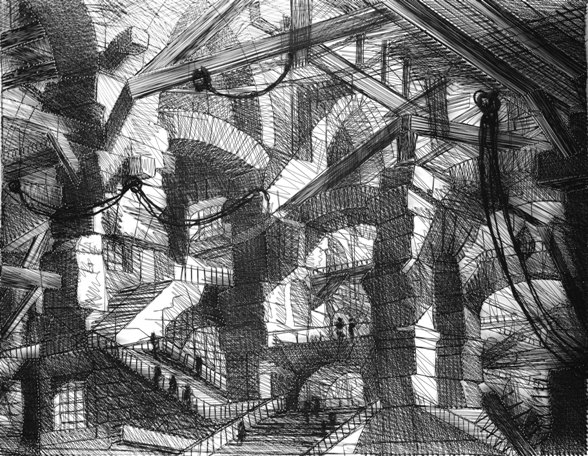
There is often close and satisfying correlation between the subject of the original work of art and the materials that Muniz chooses to transform it. For example, Muniz’s take on a series of imaginary prisons etched in the 18th century by Venetian artist Piranesi. For his version, Muniz has used hundreds of meters of fine sewing thread hooked onto tiny pins to mark out these interiors. This choice of material emphasizes the sensation of being trapped in a cage or spider’s web.
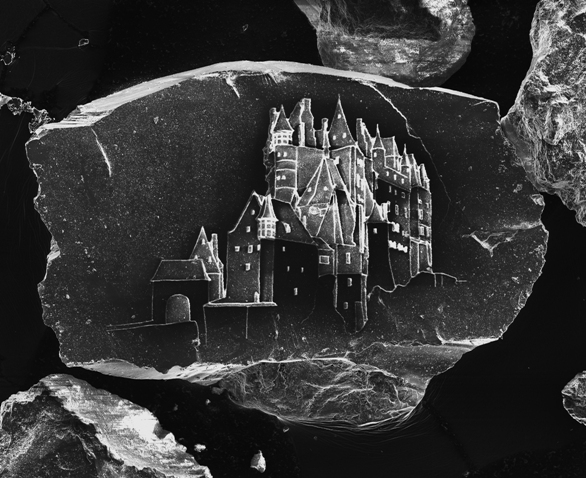
Muniz might be accused of formulaic art: finding a developing a popular and profitable mode of working and sticking with it for many years. But there is truly much more to his art than this. Firstly, there is his versatility and painstaking skill. One can only imagine the effort it took, for instance, to produce his Sandcastles series where nanotechnology was employed. The three examples in the exhibition started out as sketches of chateaux in France’s Loire Valley. Next etchings were made of them onto a single grain of sand using an ion beam controlled by a computer. After this stage was completed, an electron microscope scanned the grain with the resultant eerie images emerging.
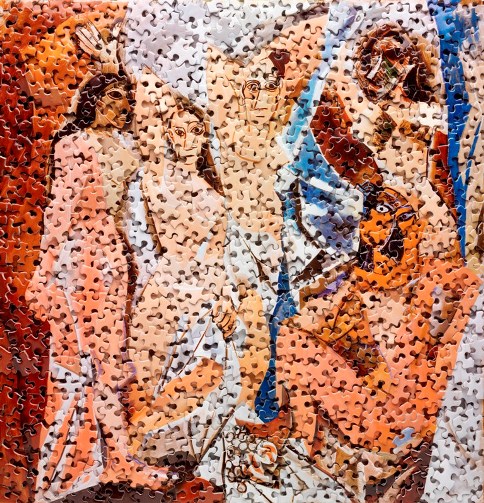
Secondly, there is a clear idea behind all his art. This concerns the exploration of how images are formed, and how two necessary elements come together: an (inanimate) idea and its concrete materialization. This concept is well illustrated, in Muniz’s recreation of Picasso’s Les Demoiselles d’Avignon. (This seminal painting, abandoning traditional ways of representing form and space, was certainly viewed as a puzzle by Picasso’s contemporaries). Studying Muniz’s version close up we seem to be looking at a haphazard arrangement of pretty colored shapes. But stepping back a special moment arrives when these objects lose their significance and a work of art comes into being.
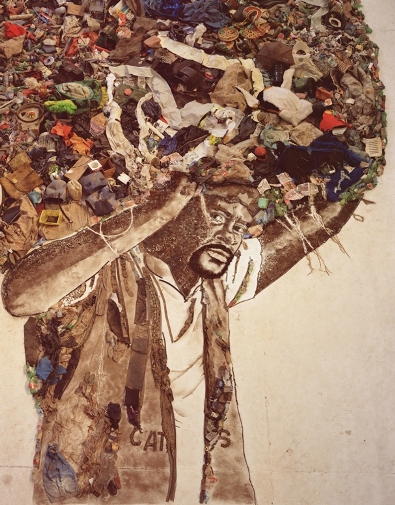
Recyclable materials are the basis for his Pictures of Garbage, a series photographed and completed at Jardim Gramacho where Muniz was following the lives of seven people who earned their living by sorting recyclable items from mounds of rubbish. . Their portraits were embellished with miniaturized items salvaged from the dump. The poses he asked them to hold were either based on famous paintings or had mythological associations. One example is his photo of Carlão, one of the group of workers. Although he is shown with a bundle of found objects balanced on his head, the man’s appearance is nevertheless noble, relating to that of the Greek hero Atlas whom legend relates carried the weight of the heavens on his shoulders.
This project and its filmed documentation raises question of social inequality and whether or not art can indeed transform society. All the workers at the site whose story Muniz followed benefited from the proceeds of the sale of the Pictures of Garbage series. The artist also invested in local community projects. What we don’t know is whether this particular group was able, as a result of this venture, to permanently escape from a life of hardship and poverty.
Warmly recommended.
Tel Aviv Museum of Art, 27 Shaul Hamelech Blvd, Tel Aviv. Till August 2014






The article on Muniz is a serious analysis of the exhibition.
A most clear and bright perception of the artist`s work.
I enjoyed reading it!
Ita Elhanani
Comments are closed.